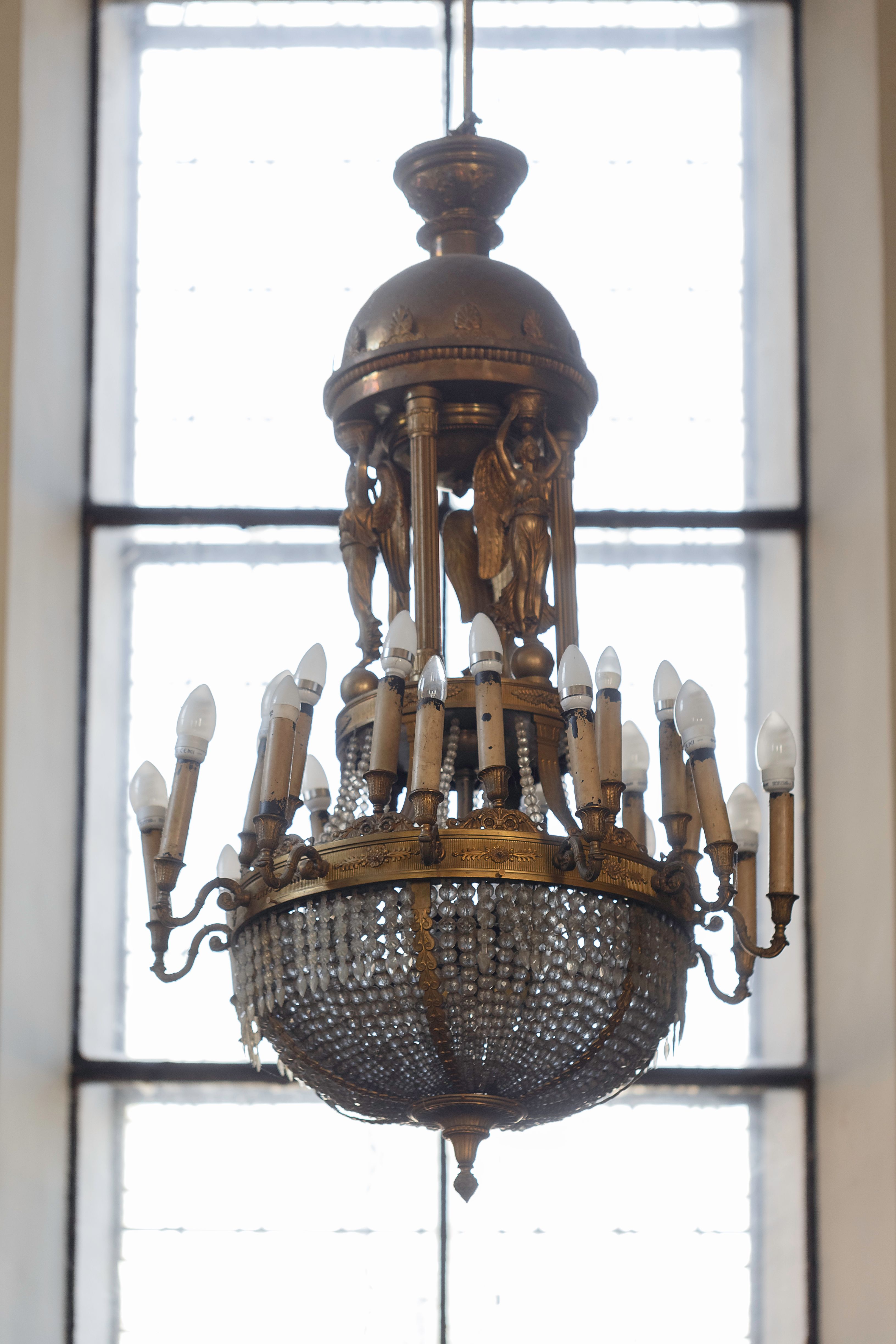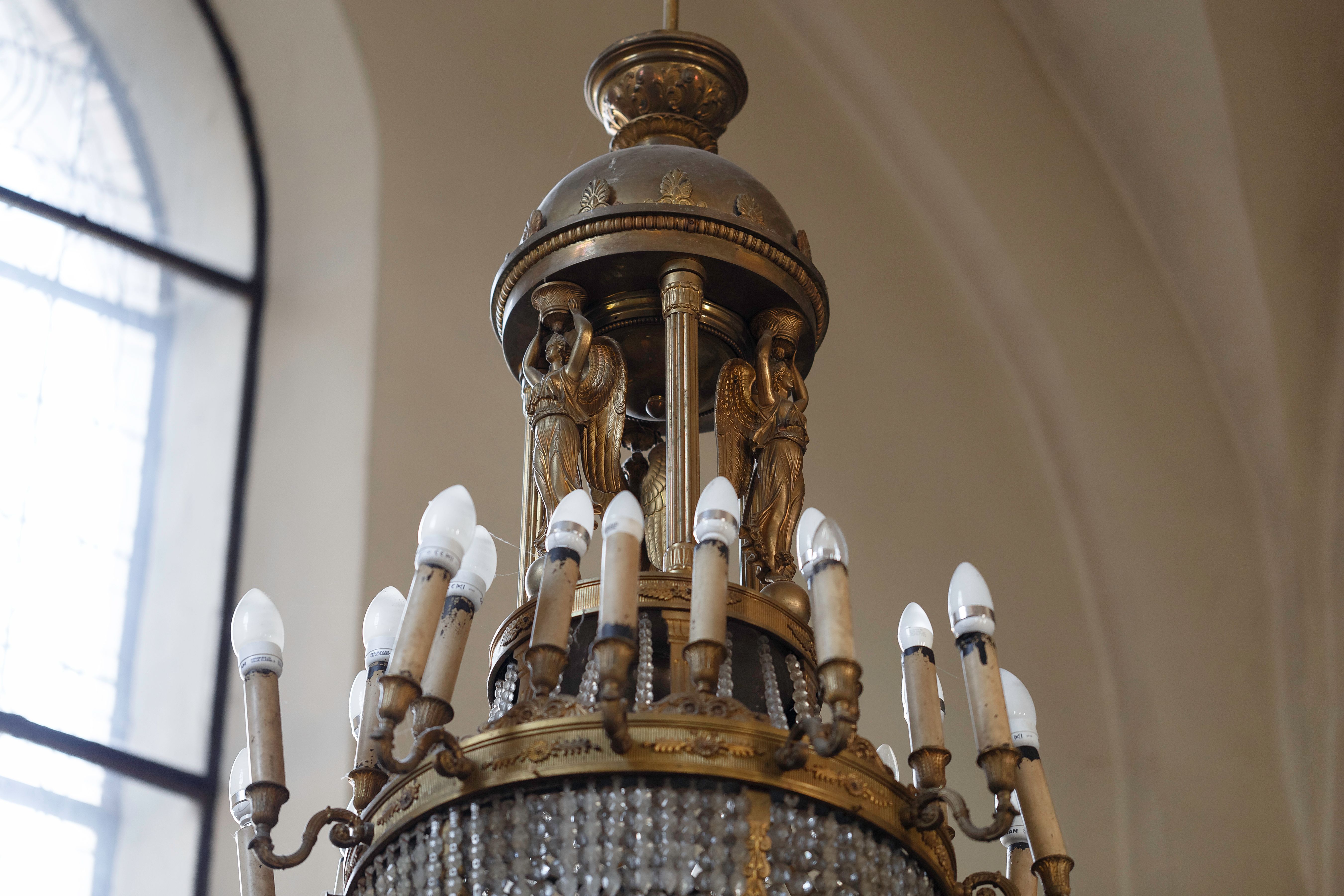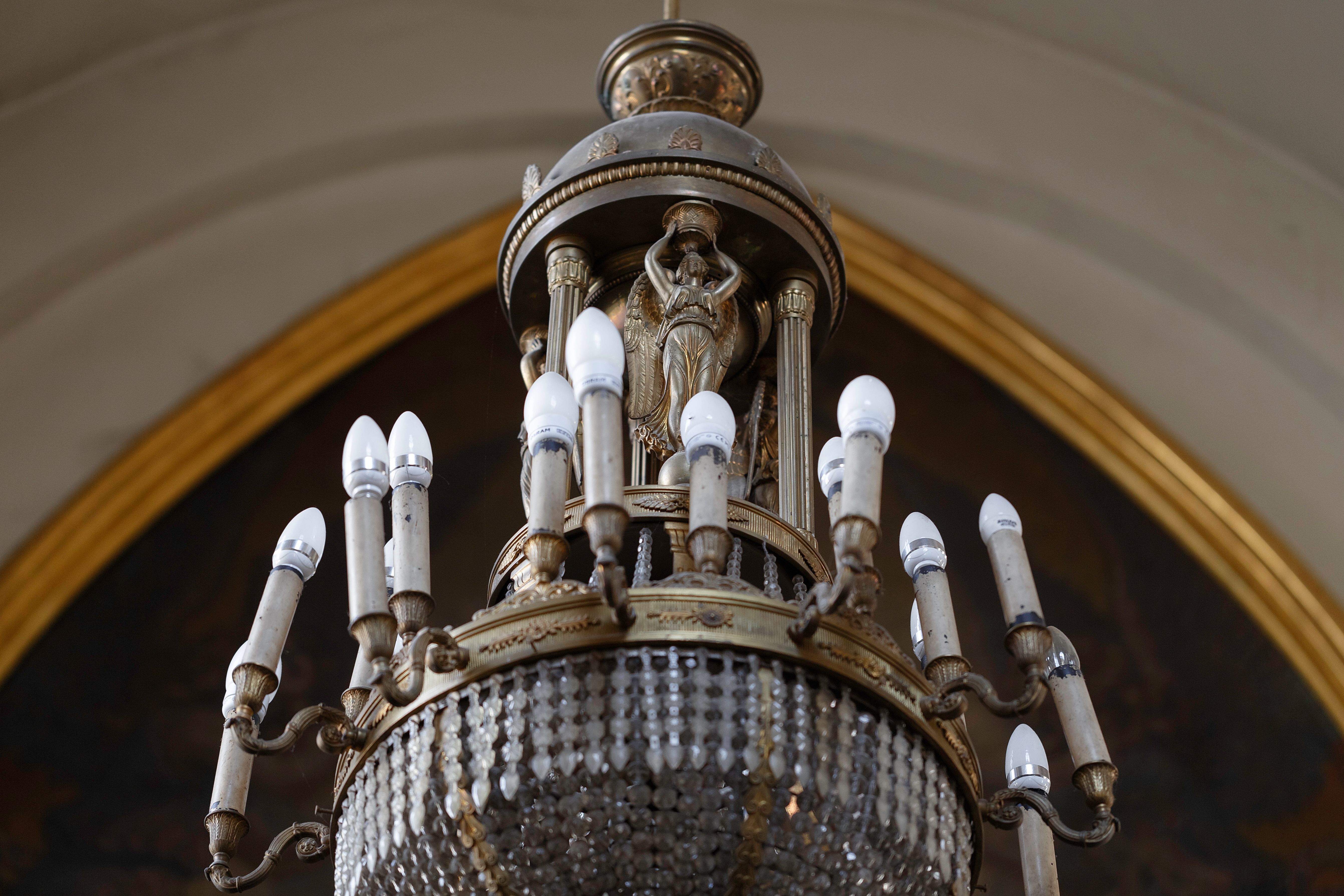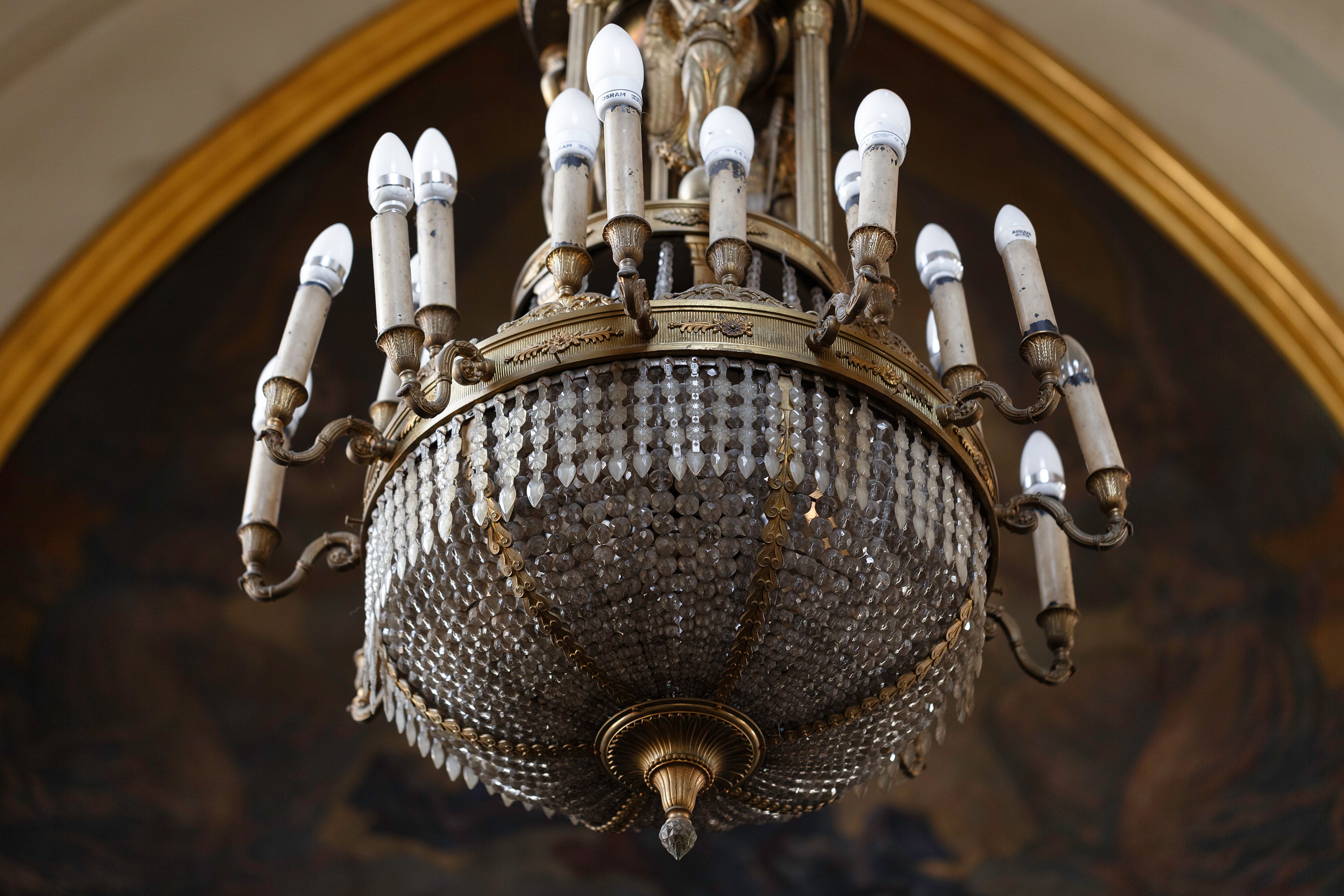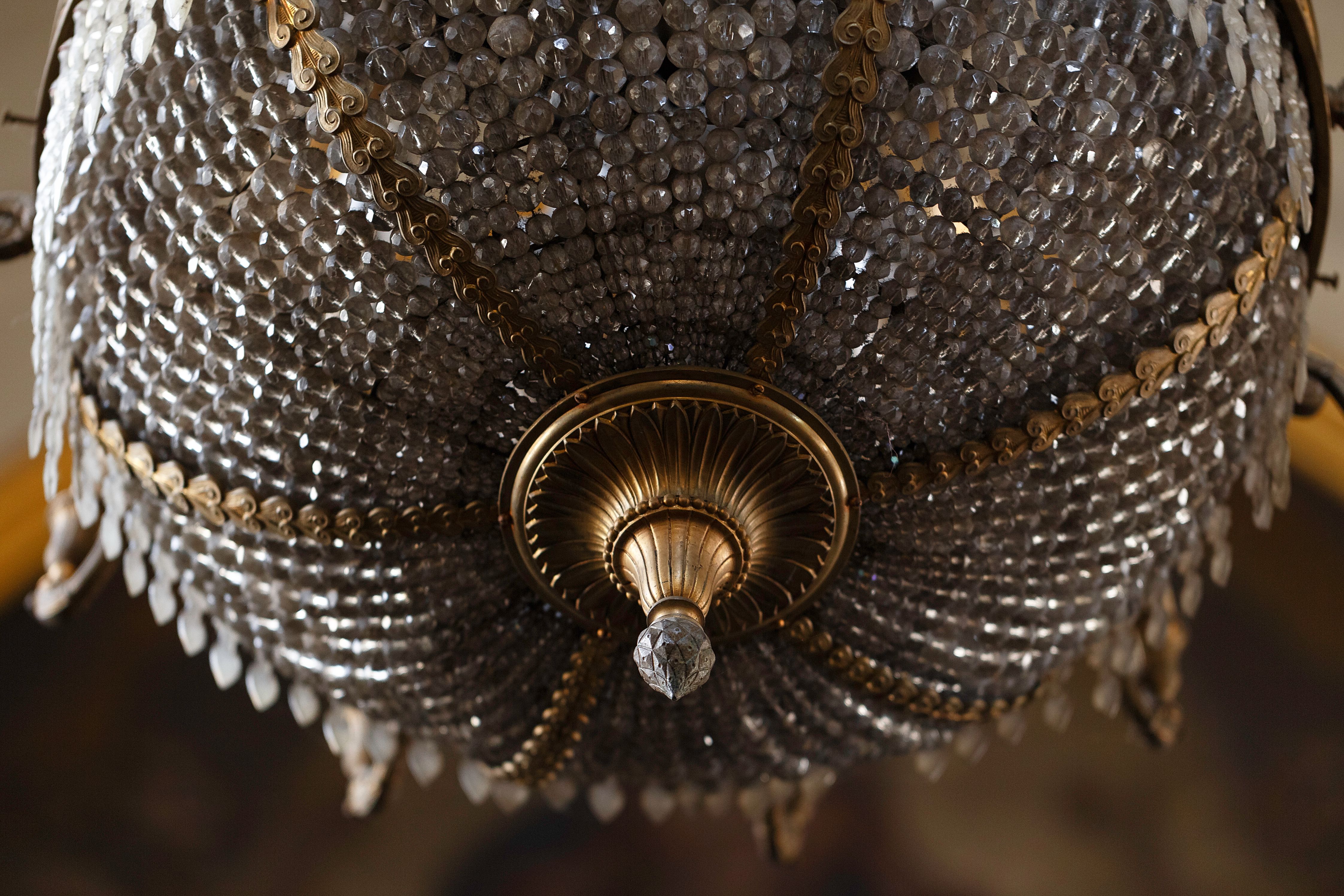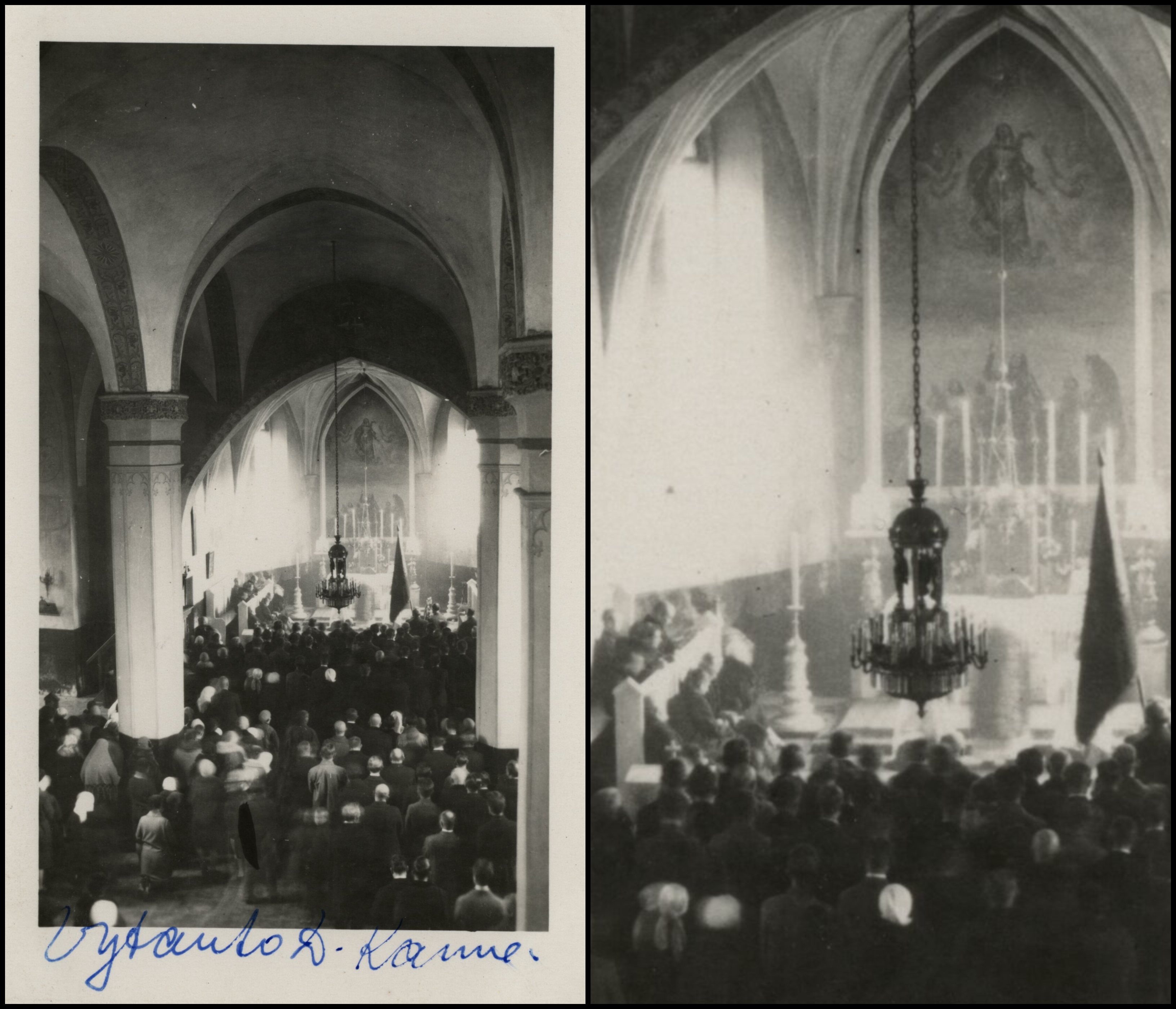The church of the Assumption of the Blessed Virgin Mary (Vytautas the Great) in Kaunas
-
Address: Aleksoto str. 3, Kaunas
Time of origin: 1925
Place of origin: Central Europe or Russia
Material, Technique: bronze, cooper: casting, cizeling, repoussé; gilding; crystal
Dimensions: inaccessible to measure
The chandelier of architectural forms is cast in bronze. Its stem consists of three sculptures depicting Victoria, the ancient Roman goddess of victory, which was a particularly common element in the standing candelabras made during Napoleon’s reign. Angel-like winged goddesses hold a cupola with pillars interposed between them. Little below, arms of the chandelier are arranged on two stories. The lower crown consists of twelve, and the upper one has ten arms. Lot of bead strands beneath the chandelier form a basket. Beads in strands are of different sizes, faceted, and strung in descending order towards the stem axis. When the chandelier is lit, the basket is illuminated, translucent, and the light from the arms illuminates the winged figures.
According to the research of art critic Laima Šinkūnaitė, Juozas Tumas-Vaižgantas, the priest and Lithuanian prose classic, acquired this chandelier for the church in 1925 [2]. In 1920, appointed as a Rector, he carefully restored and cared for this church for thirteen years. In a photograph by Vincas Uždavinys taken in the 1920s–1930s, the chandelier has been hanging in the most visible place of the church — transept in front of the high altar. It is symbolic that today the chandelier hangs in the chapel of St. Anthony of Padua, where a tombstone monument erected in 1933 to the buried Juozas Tumas-Vaižgantas who was one of the greatest promoters of the Lithuanian identity and whose life was strongly related to Vytautas the Great Church.
The chandelier of neo-Empire style does not look exceptionally luxurious; however, in those days, it cost 4,000 litas [2]. Bearing in mind that in the 1930s, a new Ford car cost 7,500–8,000 litas and the monthly salary of the president was 4,000 litas [1], the chandelier certainly does not seem to be a simple purchase.
Literature and sources:- Algos ir kainos tarpukario Lietuvoje, in: Pinigų muziejus (žiūrėta 2019 10 08), prieiga internete: <http://www.pinigumuziejus.lt/lt/algos-ir-kainos-tarpukario-lietuvoje-2/>.
- Šinkūnaitė Laima, Švč. Mergelės Marijos Ėmimo į dangų (Vytauto Didžiojo) bažnyčia, Kaunas, 2005, p. 26.
- Valtaitė-Gagač Alantė, XVII a.–XX a. 4 dešimtmečio sietynų paveldas Lietuvoje: Daktaro disertacija, Vilnius: Vilniaus dailės akademija, 2015, p. 253.
